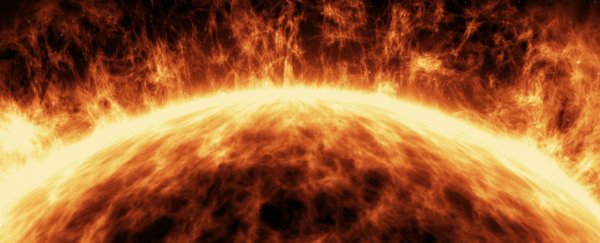How do you separate a true star from the stellar wannabes of the Universe? After a decade of collecting data, astronomer Trent Dupuy thinks he finally has the answer.
With so many objects known to sit in that weird middle ground between giant planets and tiny stars, scientists have struggled to boil it down to a simple answer. What Dupuy boils it down to is mass.
"Mass is the single most important property of stars because it dictates how their lives will proceed," Dupuy, from the University of Texas at Austin, explained at the American Astronomical Society's summer meeting earlier this month.
We benefit from that here on Earth, as our Sun is in the stellar goldilocks zone – its mass is just right to sustain nuclear fusion within its core for billions of years. This has provided the conditions for life to develop and evolve on our planet.
But not everything in the galaxy is so nice and stable. More massive stars burn through their nuclear fuel quicker, dye young, and go out with a violent bang in the form of a supernova.
Less massive objects, like brown dwarfs, are like stellar runts, possessing more mass than a planet, yet not enough mass to be a fully fledged star.
Often referred to as failed stars, they're ubiquitous throughout the Universe, but their exceedingly dim glow makes these objects difficult to study.
First proposed to exist 50 years ago, these enigmatic objects help bridge the gap between stars and planets, but it wasn't until more recently that astronomers began to study them in great detail.
"When we look up and see the stars shining at night, we are seeing only part of the story," Dupuy explains.
"Not everything that could be a star 'makes it,' and figuring out why this process sometimes fails is just as important as understanding when it succeeds."
Stars like the Sun shine as a result of nuclear reactions that constantly converts the supply of hydrogen in their cores into helium.
These same reactions determine how bright a star shines – the hotter the core, the more intense the reaction and subsequently the brighter the star's surface will be. As expected, less massive stars are dimmer due to cooler centres, which produce slower reactions.
Don't let the name fool you – brown dwarfs aren't always brown. These stellar wannabes are actually red when they form, then turn to black as they slowly fizzle out over trillions of years.
That's because despite outweighing even the largest of planets, brown dwarfs have so little mass that their centres aren't hot enough to sustain nuclear reactions.
In the 1960s, astronomers theorised that there must be a mass limit for fusion.
"Below this limit there's not to replenish the energy that's constantly being radiated into space," Dupuy explained in his AAS session. "Objects with a given mass below this limit would simply cool forever."
Previous studies of stellar evolution have suggested that the boundary between red dwarfs (the smallest stars) and brown dwarfs was around 75 Jupiter masses (or roughly 7-8 percent of the Sun). But until now, his measurement was never directly confirmed.
Dupuy and Michael Lui of the University of Hawaii spent the past 10 years studying 31 binary pairs of brown dwarfs with the help of the most powerful telescopes on Earth – the Keck Observatory and the Canada-France-Hawaii Telescope, as well as some input from Hubble.
By analysing a decade's worth of imagery, Dupuy and Liu have created the first large sample study of brown dwarfs masses.
According to Dupuy, an object must weigh the equivalent of 70 Jupiters in order to spark nuclear fusion and become a star, which is slightly less than previously suggested.
The duo also determined there's a temperature cut-off, with any object cooler than 1,600 Kelvin (approximately 1,315 Celsius and 2,400 degrees Fahrenheit) classified as a brown dwarf.
The study will help astronomers better understand the conditions under which stars form and evolve – or in the case of brown dwarfs, fail.
It could also provide new insight into planetary formation as the success or failure of star formation directly impacts the star systems they could potentially produce.
The research will be published in an upcoming edition of The Astrophysical Journal Supplement, and a pre-print is available here.
